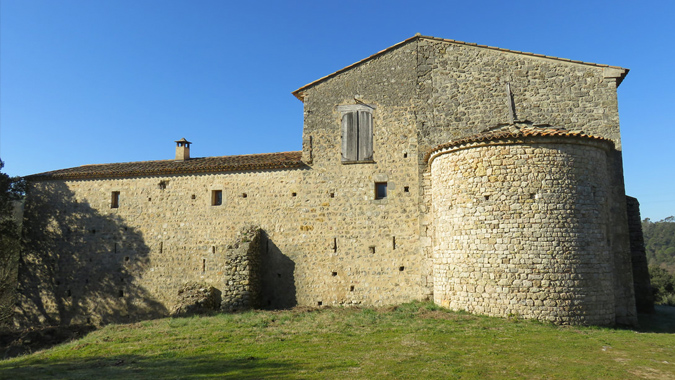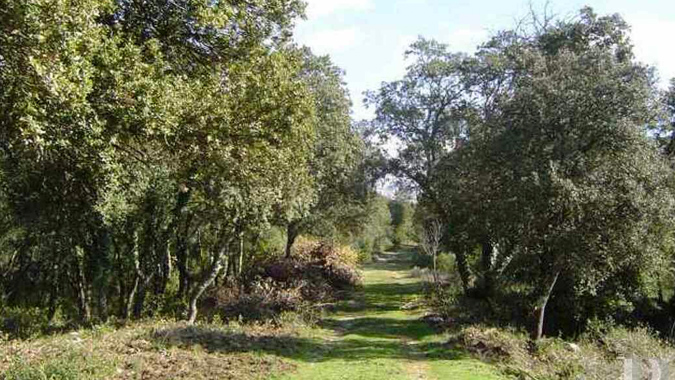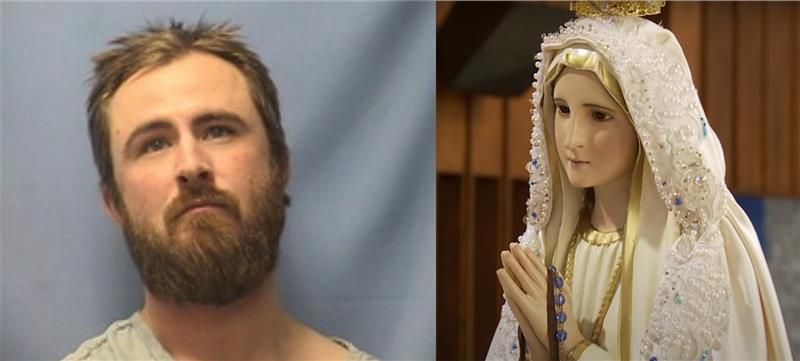
“Are not monasteries founded by other monasteries, with a certain number of monks?”
This question arose several times when, in 2011, at the behest of the diocesan bishop, two of us began living the monastic life here in the large presbytery in the French Provençal village of La Garde-Freinet.
Monasteries are sometimes founded by other monasteries with a foundational nucleus of monks, of course. But not always. Dom Guéranger, a diocesan priest with friends, laid the foundations of the Solesmes Benedictine Congregation. Dom Gérard, seeking to live as a hermit, found himself the founder of the Abbey of Le Barroux. Dom Cassian, the founding Prior of the Benedictines of Norcia, began to live the monastic life together with only one other person in an apartment in Rome. In the last twenty years monasteries have also been established in modest circumstances, with one or two men, at the diocesan level in Villatalla, Italy, in Tulsa, Oklahoma, USA (now Silverstream, Ireland), and in the Archdiocese of Hobart, Australia.
So our own essay into monasticism was neither unprecedented nor unique in modern times. It was – and is – however, ambitious if not audacious.
For as the years since our foundation have shown, not everyone who knocks loudly and insistently at the monastery door is truly “zealous for the Work of God, for obedience, and for humiliations” (Rule of St Benedict, ch. 58) – the latter, of course, being in abundant supply when one is a small community with the many personal and practical challenges that occasions. Our earlier years were certainly not easy, with the loss of a founder and with the coming and going of those looking for an ecclesiastical home (seemingly any portal would do!) but without a specifically monastic vocation. One must allow candidates to test a vocation, of course, and it is perfectly normal that not every postulant or novice proceeds to make profession, but experience has taught that true monastic vocations are a rare gift of God, identified only after much sifting.

Two factors, however, have sustained monastic life here and led to its consolidation and modest growth. The first is the principle laid down in the Rule: nihil opera Dei praeponatur – let nothing be put before the Work of God. Some communities ‘hyphenate’ themselves, describing themselves as “Benedictines of this or of that particular charism.” We do not. If we did we would be the “Benedictines of the Sacred Liturgy,” but that, surely, is a tautology. For the celebration of the Monastic Office, seven times a day and once at night, and of the Holy Mass and other rites – including those of ordination – according to the usus antiquior (the more ancient form of the Roman rite) are our raison d’être. Our vocation is to celebrate the Sacred Liturgy in its traditional integrity, nothing less.
We seek to do this, after the adage of St Thomas Aquinas, ‘daring to do as much as we can’ (Sequence for Corpus Christi). We have every excuse to monotone the offices – we are small, we are busy with many things, etc. – but apart from much of Matins, we sing every hour in chant to the best of our ability. We celebrate the rites of Holy Week and the Vigil of Pentecost (pre-1955, in accordance with the permission we have received) optimally, to be sure with the help of many friends. Our men in formation receive tonsure and the minor orders from our Bishop, Msgr Dominique Rey, according to their vocation, affording those called to the priesthood a gradual initiation into the liturgical ministries of the Church.
Certainly, we cook, clean, breed chickens and keep bees, study, write, edit, prepare rooms for guests, make marmalade, run a small shop, host an annual liturgical summer school for practical liturgical formation (which has seen us welcome Cardinal Burke, Bishop Schneider, and Archbishop Gullickson, amongst others), etc. But these activities are not the centre of our lives: that is to be found in our choir stalls, before the altar. For it is there that we are able to do what monks are called to do: to sing the praises of Almighty God for the salvation of our souls, for that of others and for the good of the universal Church.

The second factor which has sustained our little monastery these past years is the intercession of Blessed Ildephonse Schuster, the Benedictine Archbishop of Milan from 1929 to 1954. A pilgrimage to his tomb in the Duomo in Milan resulted in the most gracious gift to the monastery from Cardinal Scola of a first class relic of Blessed Schuster, ex corpore intacto. It also resulted in the arrival of two excellent vocations. Certainly, it is possible to attribute such graces to many factors, but the author has his reasons to be convinced that Blessed Schuster has interceded for us and for our men and has won many particular graces for us, particularly in times of difficulty. As a Benedictine and a liturgist, he is a most suitable patron for our house.
Today we are three, the Prior, a junior who is studying theology through the Maryvale Institute in England, and a novice – each from a different continent. Although naturally we learn and use French, as a truly international community English is the language of the house (our newsletter is bilingual).
The formation of our men follows a classic model of the study of the Rule, the Psalms, monastic history and spirituality, the Sacred Liturgy and chant throughout novitiate, and becomes more tailored according to the monk following simple profession, not excluding higher studies where appropriate. We frequently welcome other Benedictines whose presence amongst us augments our life and the formation of our men: this Lent we are privileged to have Fr Cassian Folsom coming to give us some spiritual conferences. So too, visiting other monasteries where possible so as to learn from their observance and experience is an essential part of our own development.
Questions frequently arise about our future, particularly given the number of guests and vocations enquiries and visits we receive. Can we stay here in the midst of a (beautiful and very welcoming) tourist village, sharing the parish church? We have long-since known that ultimately that will not be possible. Whilst our current buildings have enabled us to build up the monastery, ultimately we need a place of our own with land, greater facility to welcome guests and, of course, our own chapel. It is a fact that other smaller foundations have grown exponentially once they have moved from their initial arrangements into something more permanent (and some were smaller in number than we are presently when they did so). It is a fact that – whether or not they should – vocations often do seem to need the reassurance of a more ‘established’ community before they will come and see.

The possibility of moving to a more suitable home has recently arisen. A twelfth century Commandery of the Knights Templar (later taken over by the Knights of Malta) with an eleventh century chapel dedicated to St Christopher established by the Abbey of Saint Victor in Marseille, and 33 hectares of forest, which has been in private hands since the French Revolution, has come onto the open market. This property is in our diocese, well-located, and whilst some of its buildings will require restoration, its chapel and refectory are already restored and some of its other buildings are currently habitable, if somewhat modestly so.
Having consulted our Bishop, as well as relevant professionals and authorities (the buildings are listed in the second class of French historical monuments), and having made a pilgrimage to the tomb of Blessed Schuster, with the blessing and encouragement of the Bishop, we have decided to attempt to purchase this property so as to have a permanent and more suitable home for our monastic life, and in which to welcome those who wish to spend some time sharing our life.
Once again we are being ambitious and audacious, daring to hope that in God’s Providence benefactors large and small will come forward to make this possible. But we are confident that even in the modern world there are those who, as of old, will see the value of endowing a monastic foundation, and indeed who will respond to our appeal ut denuo repleat gloria Domini domum istam – that the glory of the Lord may fill this ancient house anew. For whilst we can and do pray for our benefactors before the altar of God seven times a day, at this time we urgently need their help in establishing the very place in which to do so in future years and decades.
Editor’s note: To learn more about the Monastery and its campaign to purchase the medieval Commandery, visit their website, their Facebook page (“Monastere Saint Benoit”) or request the appeal brochure or further information by email: monasteresaintbenoit@gmail.com.

If you value the news and views Catholic World Report provides, please consider donating to support our efforts. Your contribution will help us continue to make CWR available to all readers worldwide for free, without a subscription. Thank you for your generosity!
Click here for more information on donating to CWR. Click here to sign up for our newsletter.







When I viewed the rustic stone monastery chapel, altar of divine sacrificial love the longing years past remains for the solitary life with Christ. There needs be the ordinary priest in the fields of Our Lord as he sees fit. Our understanding confined his limitless.
Important point that the article apparently ignores: is it Novus Ordo or traditional Latin liturgy?
“For the celebration of the Monastic Office, seven times a day and once at night, and of the Holy Mass and other rites – including those of ordination – according to the usus antiquior (the more ancient form of the Roman rite) are our raison d’être. Our vocation is to celebrate the Sacred Liturgy in its traditional integrity, nothing less.”
“For it is there that we are able to do what monks are called to do: to sing the praises of Almighty God for the salvation of our souls, for that of others and for the good of the universal Church.”
In amongst all of the self-inflicted types devastation the Church has experienced over the past 50-60 years or more, the least appreciated (at least I believe) has been the loss of the monastic spirit that used to pervade the faith. It seems that in decades past nearly every Bishop of good will in the Church considered it absolutely imperative that there be at least one community of monks or nuns in his diocese dedicated to doing what Dom Reid states in the preceding quote. In the absence of those who pray unceasingly for the salvation of souls and the good of the Church, our priests and laypeople have lacked for the spiritual covering and power those prayers provide. To restore our Church to the fullness of Her glory requires not just the recovery of the old Mass on a large scale (along with proper theological and philosophical formation for our priests), but it also necessitates the establishment of communities of men and women who dedicate their lives to prayer for the salvation of souls and the good of the Church. For what they may be worth, I will pray for the success of Dom Reid’s efforts. They are desperately, desperately needed.
The third paragraph begins: “Monasteries are sometimes, if not often, founded by other monasteries with a foundational nucleus of monks, of course. But not always.” I would imagine that this should in fact read “… sometimes, IF NOT ALWAYS, founded…”
What was written is correct. Besides, everyone knows what he meant. Don’t be “that guy”.
Hearing about the establishment of a monastery instills hope that the Trinity is still with us; such inclinations surely come from God. But there are so few of them, places one can to turn to recharge. In Chicago, a few years ago a monastery was started. I thought this might be the beginning of the age old tradition of offering a place of retreat from the materialistic world. Instead of focusing on Chicago, the group prides itself on the response to their international online ArBnb Bed and Breakfast offering for tourists. Gone from the website is any mention of retreat-Just “let us monks make breakfast for you” Some guests didn’t even believe they could attend chapel there. They just enjoyed the novelty.